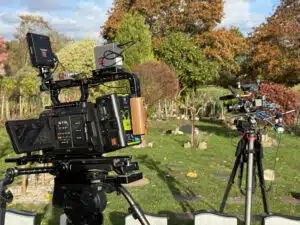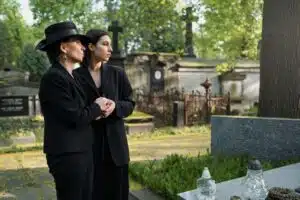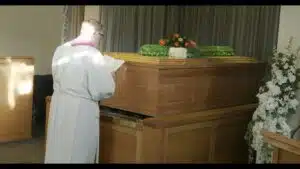Funerals are intimate, deeply emotional occasions. In these moments of reflection, grief, and connection, discreet funeral photography serves a unique and essential purpose—preserving memories with compassion and respect. At Funeral Filming, we understand that capturing these fleeting expressions and sacred goodbyes demands a delicate balance of presence and invisibility.
In this comprehensive guide, we explore the thoughtful techniques, ethical considerations, and emotional sensitivity required to master the art of discreet funeral photography. Whether you’re a professional photographer seeking to refine your approach, or a family member considering hiring someone to document a loved one’s final tribute, this guide offers deep insights to ensure the process remains respectful, unobtrusive, and profoundly meaningful.
Understanding the Purpose of Discreet Funeral Photography
It is more than just a service; it’s an art form that documents one of the most significant chapters in a family’s story. At its core, this form of photography serves to honour the departed and support the grieving process by preserving the emotional atmosphere of the day.
For families, having these moments captured can provide a gentle reminder of the love shared, the people who gathered, and the rituals that marked the final goodbye. As memory fades, photographs remain—offering solace, unity, and a sense of peace.
Photographers must carry this responsibility with grace, ensuring every frame tells a story without disrupting the proceedings. Unlike weddings or portraits, where subjects expect attention, discreet funeral photography hinges on minimal intrusion and deep emotional intelligence.
Developing a Respectful Presence
Respect is the cornerstone of all funeral photography. A photographer’s presence should feel almost invisible, blending into the background without interfering with the service. Achieving this requires a conscious effort to move silently, dress appropriately, and avoid any form of distraction.
Maintaining a respectful presence begins even before the funeral itself. Engaging with the family ahead of time helps build trust, set boundaries, and understand their specific wishes. Some families may want only a few moments captured, while others may prefer a full narrative of the service and attendees.
Key components of respectful presence include:
- Pre-funeral consultation: Understand cultural or religious practices that must be observed.
- Silent movement: Avoid abrupt camera sounds or movement.
- Blending in: Dress in muted, respectful attire.
- Emotional awareness: Recognise moments of intensity and respond with discretion.
This approach fosters trust between the photographer and the family, allowing space for authentic moments to emerge naturally. By maintaining distance—both physical and emotional—photographers allow the family to grieve without feeling observed.
The Power of Candid Shots in Grief Documentation
Candid shots are the heart of discreet funeral photography. Unlike posed portraits, which can feel staged or artificial, candid images reveal genuine emotions—grief, love, unity, remembrance. Capturing a child reaching for a flower, a tear rolling down a grandparent’s cheek, or a supportive embrace between mourners can speak volumes.
This style of photography captures what words cannot. The images become timeless visual echoes of the day’s emotional journey. To photograph these moments effectively, photographers must:
- Remain vigilant yet unobtrusive
- Use silent shutter modes to avoid drawing attention
- Rely on intuition to anticipate poignant moments
Shoot from the sidelines, through doorways, or over shoulders to retain privacy
Mastering Unobtrusive Techniques
To maintain the integrity of the service, unobtrusive techniques are essential in funeral photography. These methods allow the photographer to operate almost invisibly while still capturing impactful images.
Here are some proven techniques used by experienced professionals:
- Use telephoto lenses: This allows photographers to maintain distance without losing detail.
- Shoot in natural light: Avoiding flash eliminates disruption and maintains the solemn tone of the event.
- Minimal gear: Use compact, silent equipment to avoid drawing attention.
- Pre-scouting the venue: Know the layout ahead of time to plan discreet vantage points.
Mastering these techniques ensures that the photographer can focus on capturing emotions without interfering with rituals or personal moments. In some cases, using tripods or remote shutters positioned in low-traffic areas can yield powerful, undetected captures.
Capturing Emotions Without Disruption
Capturing emotions—authentically, delicately, and ethically—is arguably the most vital skill in discreet funeral photography. Grief is personal and complex. It manifests in gestures, glances, and unspoken moments. The goal is to preserve these expressions of love and loss without intruding.
Photographers must know when to shoot and when to pause. For instance, during eulogies or spiritual rituals, the best approach may be to lower the camera and simply observe. This selective documentation ensures the most sacred parts of the ceremony remain undisturbed.
To capture emotions effectively:
- Read the room: Observe emotional rhythms and react appropriately.
- Respect boundaries: Know when not to shoot.
- Focus on storytelling: Think in sequences—arrival, ceremony, goodbyes.
Emotional storytelling can be incredibly powerful when handled with care. A sequence showing family members arriving, greeting each other, holding hands during the service, and parting ways can serve as a visual eulogy that tells the story of collective remembrance.
The Importance of Minimal Intrusion in Sacred Spaces
Funerals are sacred. Whether religious, cultural, or secular, the environment demands a high level of sensitivity. This is where minimal intrusion becomes a guiding principle for funeral photographers.
Being physically present while remaining emotionally and visually unobtrusive takes practice. Often, this means operating with a journalistic mindset—being ready, but not reactive.
Minimal intrusion techniques include:
- No flash photography: The sudden burst of light is jarring and inappropriate.
- Silent shutters: Ensure zero noise pollution in quiet moments.
- Strategic positioning: Find places to shoot from where movement is limited.
- Non-verbal communication: Avoid talking or engaging during the service.
Photographers should also respect any signage or requests made by the officiant. In some traditions, photography may be restricted during certain rituals. Following these rules is not just ethical, it is essential to maintaining trust and honouring the significance of the space.
Why Families Choose Discreet Funeral Photography
For many families, the idea of having a funeral photographed may feel unfamiliar or even uncomfortable. But over time, more people are embracing discreet funeral photography for the comfort, closure, and connection it brings.
Families often choose this service for:
- Absent loved ones: Not everyone can attend. Photographs offer them a way to feel included.
- Healing: Viewing images after the funeral can help process emotions.
- Legacy: It preserves not only the event, but the people who attended and the love they shared.
Clients consistently express that the images provide unexpected comfort. What might feel like an unusual request at first often becomes one of the most meaningful parts of the farewell.
How to Hire the Right Funeral Photographer
Choosing the right photographer is crucial. This individual will not only be present at one of your most vulnerable moments but will also shape how it’s remembered. Here’s what to look for when hiring:
- Portfolio: Review previous work to ensure a style aligned with your expectations.
- Experience: Ask about their experience with funeral photography specifically.
- Sensitivity: Gauge their emotional intelligence during the consultation.
- Discretion: Confirm they use silent, unobtrusive equipment and techniques.
- References: Speak to past clients to understand how the photographer conducted themselves.
A good photographer will answer questions honestly, respect your wishes, and outline how they will operate during the event. If you feel comfortable and understood, that’s a good sign.
Preserving Memories with Quiet Grace
Discreet funeral photography is not about taking pictures—it’s about honouring legacies. It’s about capturing final goodbyes and shared sorrow with sensitivity, skill, and humility. In mastering unobtrusive techniques, candid storytelling, and minimal intrusion, photographers serve not only as documentarians but as silent witnesses to a family’s most sacred day.
Whether you’re a professional seeking to refine your craft, or a grieving family considering this service for the first time, remember: the right photographs can bring comfort, offer closure, and preserve the memory of love shared.


